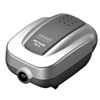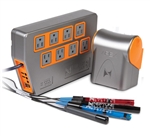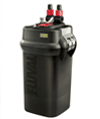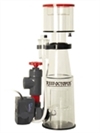Aquarium Hydrometers Vs. Aquarium Refractometers
Every saltwater aquarium requires a testing instrument to measure the salinity (salt level) of the water. To do so you will need either a hydrometer, such as the Coralife
Deep Six Hydrometer, or a
refractometer, such as the
MarineAndReef.com Reefractometer. These devices measure the amount of salt dissolved into the aquarium water by reading in salinity or specific gravity. Most instructions on aquarium salts and other aquarium products refer to specific gravity as the measurement of salinity. The recommended specific gravity for fish-only tanks is 1.020 to 1.023, for reef and invertebrate tanks 1.024 to 1.026. Refractometers are not as common as
hydrometers, partly because they are more expensive and partly because they are not well understand. We recommend using a refractometer because it is more accurate than a hydrometer, and they are easy to use. To use, just put a drop of your saltwater onto the refractometer’s glass plate. The refractometer uses ambient light to measure the saltwater’s refractive index. As the light shines through the refractometer, it passes through lenses and appears on a scale. The light bending at the prism sends the light higher or lower in the scale's grid. The eyepiece viewfinder is used to determine clearly where your salinity is at on the refractometer’s scale.
The
Milwaukee Seawater Digital Salinity Refractometer is easier to use that a traditional refractometer because you do not need to read the scale through the eyepiece. The reading just appears in the LCD readout, and additionally it has a temperature compensating feature (
the temperature affects the salinity reading).
Refractometers need to be calibrated periodically using a calibration solution such as the
Salinity Calibration Solution, Single Sachet.
Most novice aquarists will use a hydrometer because it is cheaper. Keep in mind—they will not last nearly as long as a refractometer because they become encrusted with minerals. To use a hydrometer you will first want to break it in by filling the unit with saltwater and letting it sit for 24 hour. Then, to measure your saltwater you should dip it in the water sample until the container is submersed. When it is full, set it on a flat surface. Sometimes there will be air bubbles on the meter--make sure to tap those off by lightly tapping the hydrometer. When the hydrometer is full, the buoyant needle will float to you saltwater level. If it reads high, dilute the mixed water with more fresh water, and if it reads low gradually add salt mix. When you are done with the hydrometer, rinse in fresh water and store in a dry place. The
Instant Ocean Hydrometer is made of glass and is affordable and accurate enough for basic aquarium testing.
Some aquarist that prefer constant monitoring will use a Conductivity Monitor to check their salinity. When the Monitor probe is placed in the saltwater, the meter applies voltage between two electrodes inside the probe. Electrical resistance from the saltwater causes the voltage to drop, which is read by the meter. The meter converts the results into microSiemens per centimeter. This value indicates the total dissolved solids. A reef aquarium’s conductivity should be 53 mS/cm.
When it come to measuring the salt in your aquarium there are a few choices—the most affordable choice being a hydrometer. The easiest and most accurate choice is a refractometers. For constant monitoring use a conductivity monitor.



























